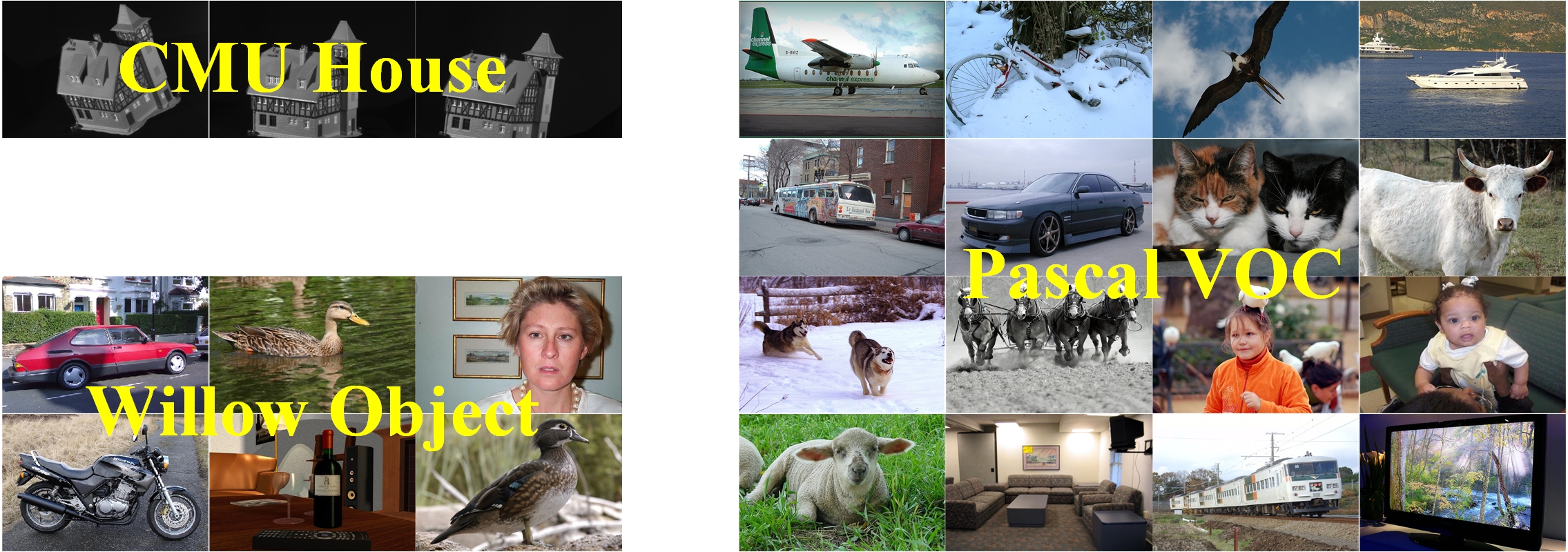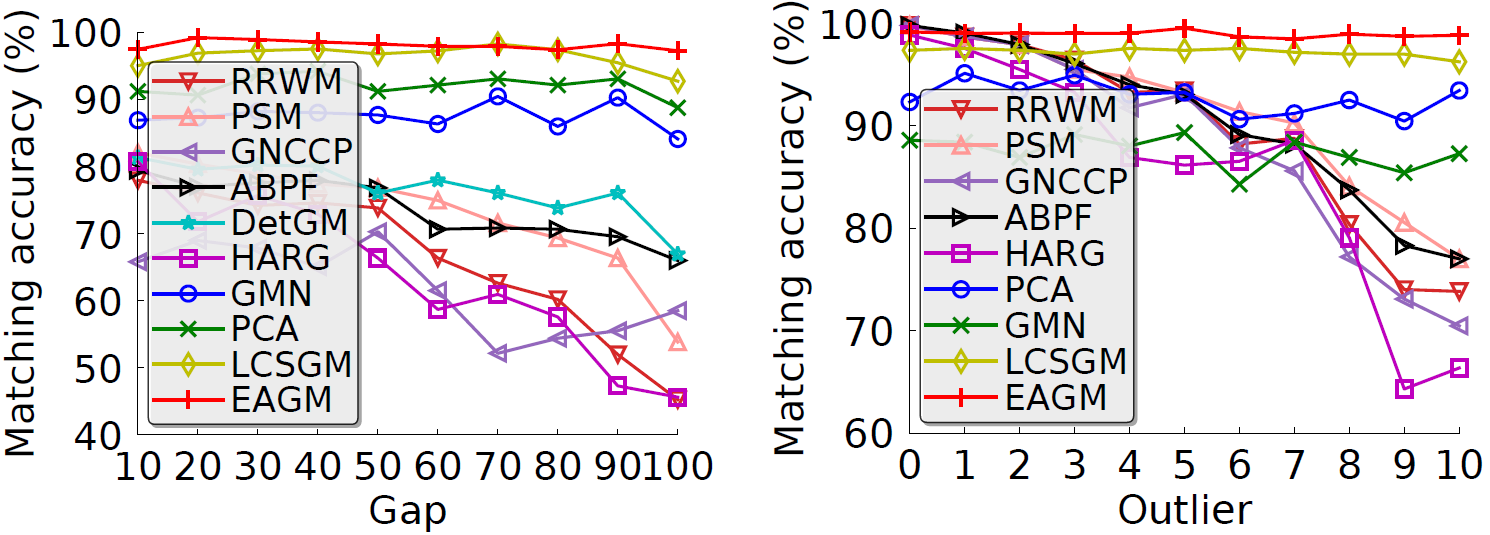Adaptive Edge Attention for Graph Matching with Outliers
Jingwei Qu1
Haibin Ling2
Chenrui Zhang1
Xiaoqing Lyu1
Zhi Tang1∗
1Peking University 2Stony Brook University
[PDF] [Code]
Abstract
Graph matching aims at establishing correspondence between node sets of given graphs while keeping the consistency between their edge sets. However, outliers in practical scenarios and equivalent learning of edge representations in deep learning methods are still challenging. To address these issues, we present an Edge Attention-adaptive Graph Matching (EAGM) network and a novel description of edge features. EAGM transforms the matching relation between two graphs into a node and edge classification problem over their assignment graph. To explore the potential of edges, EAGM learns edge attention on the assignment graph to 1) reveal the impact of each edge on graph matching, as well as 2) adjust the learning of edge representations adaptively. To alleviate issues caused by the outliers, we describe an edge by aggregating the semantic information over the space spanned by the edge. Such rich information provides clear distinctions between different edges (e.g., inlier-inlier edges vs. inlier-outlier edges), which further distinguishes outliers in the view of their associated edges. Extensive experiments demonstrate that EAGM achieves promising matching quality compared with state-of-the-arts, on cases both with and without outliers.
Architecture of EAGM

Edge Semantic Feature

Dataset

Quantitative Results

Comparison of matching accuracy (%) on Pascal VOC. Numbers in red indicate the best performance.

Comparison of matching accuracy (%) on CMU House: (a) sampling gap, (b) outlier.
Reference
@inproceedings{qu2021adaptive,
|